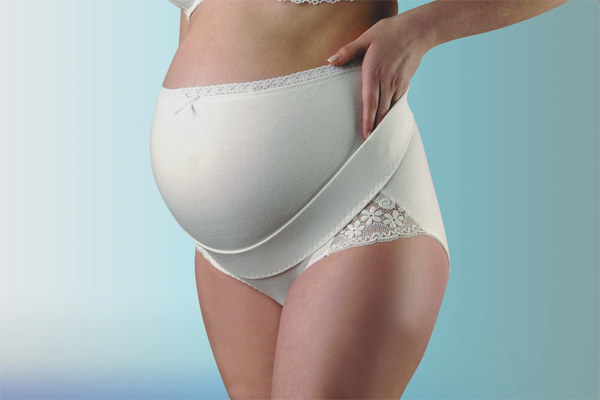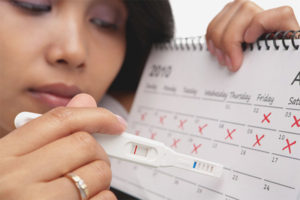The content of the article
The most important thing during pregnancy is to preserve the health of the future mother and baby. For these purposes, doctors and orthopedists have developed a antenatal bandage. It helps the pregnant woman to feel comfortable despite the growing tummy, especially if she leads an active lifestyle. Many mothers believe that the prenatal bandage brings discomfort to the baby, limits its mobility. If you doubt the appropriateness of the application, consult your obstetrician-gynecologist, who will dispel all myths.
Do I need to wear a bandage
A prenatal bandage must be worn for all pregnant women in order to prevent the development of many diseases associated with the load on the spine and abdominal organs.
First of all, it is recommended in the following cases:
- Working pregnant, whose activity is associated with a long stay on their feet.
- When appearing lumbar pain.
- When osteochondrosis.
- With varicose veins in the legs.
- With edema.
- With multiple pregnancies.
- With the second and subsequent pregnancies.
- With the threat of preterm birth.
- In the presence of a scar on the uterus.
- With plenty of water.
- With a large size of the uterus or fetus.
- With a low location of the placenta.
Also, the bandage helps preserve the beauty of the future mother, as it significantly reduces the load on the muscles and skin of the abdomen, preventing their stretching. Women noted the absence of striae on the skin and the rapid return of the press to its former form.
Where to buy a bandage
Today, prenatal bandage can be purchased at the pharmacy, in any store of goods for children and expectant mothers and through the Internet. With such a diversity, it is worth paying attention to the checked outlets and avoid dubious ones (markets, tents).
It is best to buy a bandage in a pharmacy, as the pharmacist has a medical education and will help you make the right choice. He will answer all questions and explain how to properly wear to make it comfortable for you and the future baby.
On the other hand, in a pharmacy, unlike a store, you will not have the opportunity to fully try on the product. If you make a mistake with the size, then this product is not subject to exchange and return. When trying on a bandage, be guided by your feelings. First of all, it should not cause discomfort and tightly compress the stomach.
Prenatal and postnatal bandages are also sold in online stores. You risk ordering an inaccurate size, getting a poor-quality product and will not be able to try on the ordered model. Therefore, the acquisition through the World Wide Web should be abandoned. Also avoid buying from hands or borrowing from girlfriends.
How to choose a bandage
An obstetrician-gynecologist will need to measure the volume of the hips and abdomen and tell the exact size. Usually it has the same row as the clothes you wear, that is, S (42-44), M (44-46), L (46-48).
Tips for choosing a bandage:
- Pay attention to the material from which the product is sewn. It must be natural and allow air to breathe.
- Most of the bandages are fixed on velcro, so their quality is no less important. They should hold tight, but not be too hard, otherwise they will rub in contact with the skin.
- The bandage should not hold down movements so that you can freely sit, walk, climb stairs.Therefore, during the fitting, go to the store and appreciate your feelings.
- In that case, when along with the pregnancy appeared and excess weight, then choose the product is a size larger than the one you wear in everyday life.
- Do not stop at the first model you like, measure 3-4 options and choose the one you like the most.
After buying a bandage, the doctor leading your pregnancy will show you how to put it on correctly and tell you if the size is exactly selected.
Types of bandages
Today, manufacturers produce three main types of antenatal bands. They differ not only in appearance.
Types of antenatal bands:
- Panties. They are panties that are elongated from above, covering the abdomen with elastic tape sewn into the hips and following the contours of the abdomen. Bandage shorts are made without seams and are most comfortable to wear. Since they are an element of underwear, you should stock up 2-3 models per shift.
- Belt. This is an option that can be worn under clothing or on top of it. It looks like a wide elastic tape with velcro flaps stitched along the edges and in the lower abdomen.Such a bandage is easy to accurately “adjust” to fit your anatomical features.
- Universal. Most often, women prefer it to him. Externally, it looks like a bandage belt, but with the only difference that during pregnancy it supports the tummy, and then helps the uterus and other internal organs of the abdominal cavity to recover. Such a product is recommended for those who, in the period of childbirth, have abdominal muscles.
Try on each of the options and choose a comfortable one.
How to wear a bandage
In order for the bandage to help the expectant mother reduce the load on the spine, he needs to be able to dress properly and know when to wear and what not to wear.
Obstetrician recommendations:
- It is necessary to start wearing from the 22nd week of pregnancy, if there are no contraindications to it (wrong presentation of the fetus);
- The first time the bandage should be worn by a doctor who adjusts it to your parameters. Listen carefully to his recommendations;
- Always wear the product in the prone position, so it will repeat the curves of your body as much as possible and will lie comfortably for you and the baby;
- The elastic tape should run along the thighs so that it goes under the stomach and is fixed on the pubic bone zone;
- The bandage should not be tight.When walking or sitting, it will put pressure on the hips and abdomen;
- Do not wear the product for more than three hours. Be sure to take breaks for 45-60 minutes;
- If the baby begins to push hard, you should immediately remove the product, also be sure to remove it while you sleep;
- Wear a universal bandage and bandage-belt on linen to avoid rubbing.
Follow these rules, and wearing a bandage will bring you comfort and pleasure.
How to care for the product
Add laundry detergent to warm water, stir by hand and soak the bandage. If there is a strong pollution, then rub them with a brush. After washing, rinse well, gently squeeze and leave to dry on a towel unfolded.
Remember, the time when to start wearing a bandage should be determined only by a doctor. He will assess the state of health of the pregnant woman, whether there is a contraindication for the expectant mother, and he will tell you how to decide on the correct size.
Video: bandage for pregnant women - how to wear, what to choose











To send